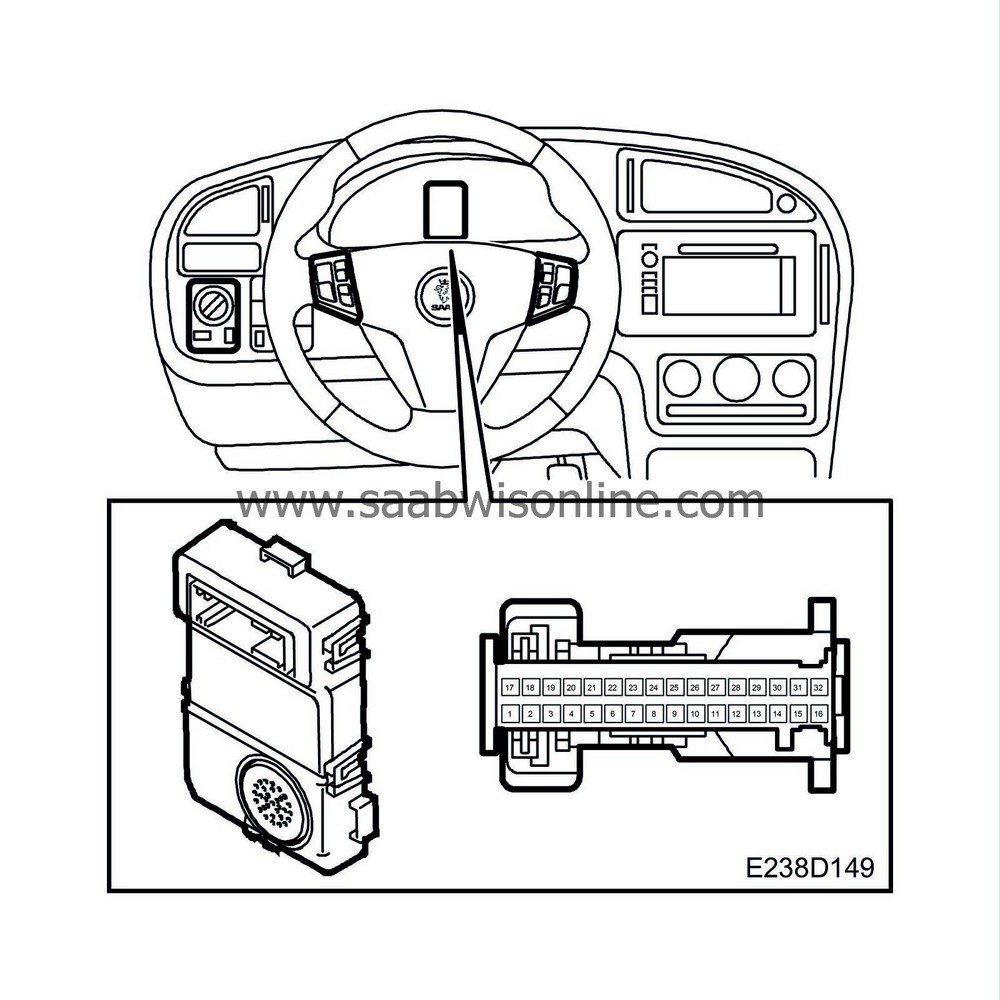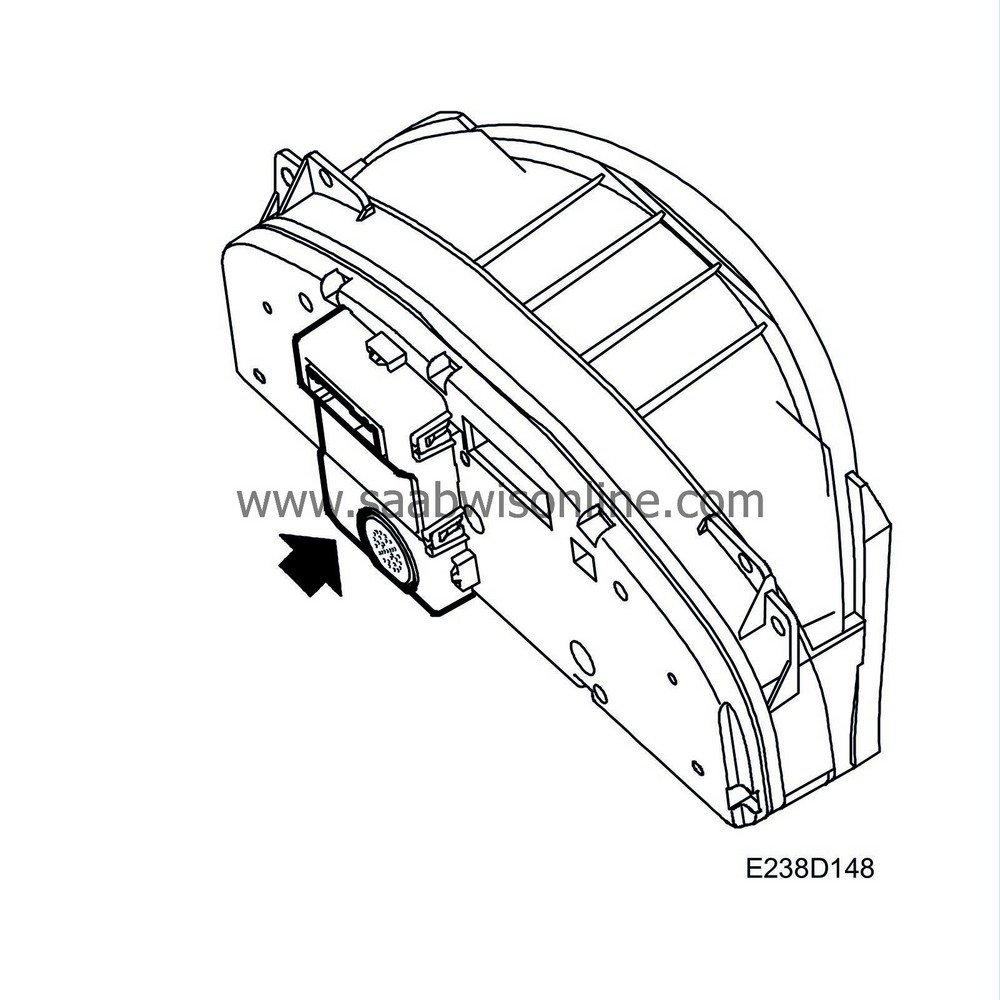PRE-RELEASE
Control module
| Control module |

| General |
The SID control module is mounted on the back of the main instrument unit.
The control module conveys information to the driver and also functions as an information link between the 2 lead and the 1 lead I-bus. See Bus communication P-bus and I-bus.
The SID control module, which does not have its own display, uses the main instrument unit information display to show messages and trip computer information.
The control module has a 32 pin connector and receives information from its own sensors and switches and also from other systems.
The information is processed and is used to activate the horn, control the audio system, shift gears in the automatic transmission, control instrument and display lighting, display check messages and to calculate trip computer functions. Certain information is transmitted on the bus by the SID control module, e.g. display information to the MIU.
The SID control module is supplied with +30 and can accommodate a voltage between 9 and 16 V when the car is driven. When the ignition is ON the control module is activated and the main instrument unit display lights up. Even if the ignition is OFF it is still possible for messages from bus-connected systems to be shown on the display.
The SID control module is active during the following situations:
| • |
Ignition in position +15 alerts all SID control module functions except parking heater time programming (option).
|
|
| • |
Ignition in the OFF position alerts SID control module with bus information as follows:
|
|
| - |
Remains on for 20 minutes if turned on by DICE.
|
| - |
Can communicate with Tech2 if the SID control module is alerted via the bus.
|
| - |
The timer for the parking heater can be programmed and started.
|
| • |
With the ignition OFF, the parking heater can still be activated and the anti-theft alarm sensors disabled.
|
|
The control module stores diagnostic trouble codes when there is a fault. If the SID control module is replaced it must be programmed by a Saab workshop.
It is important when handling control modules to ground yourself by, for example, grasping the car body. Avoid touching the pins in the control module connector socket.
| Diagnosis |
The control module monitors its internal functions and inputs/outputs.
If an internal control module fault occurs, diagnostic trouble code B1605 will be generated.



